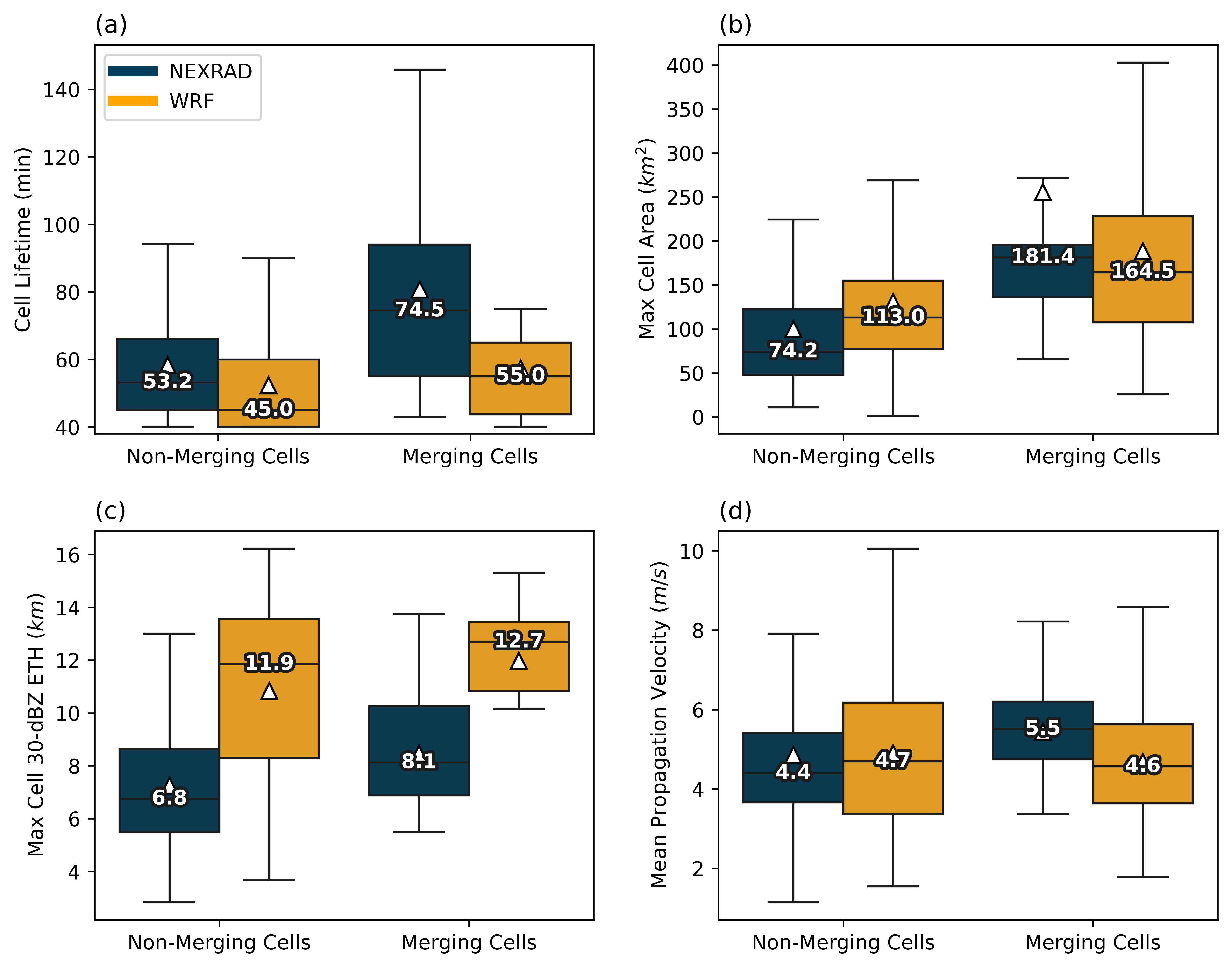Gray Zone, Clear Gaps: Sea Breezes and Convection Modeling at 1 km
Submitter
Wang, Die — Brookhaven National Laboratory
Area of Research
Cloud Processes
Journal Reference
Hahn T, D Wang, J Chen, and M Jensen. 2025. "Evaluating Sea Breezes and Associated Convective Cloud Evolution in the Model Gray Zone." Journal of Geophysical Research: Atmospheres, 130(12), e2024JD042586, 10.1029/2024JD042586.
Science

Box-whisker plots of cell lifetime (a), cell maximum area (b), cell maximum 30-dBZ ETH (c), and mean propagation speed (d) for non-merging cells and merging cells. Simulations are shown in yellow and observations are shown in navy. The mean values are indicated by a triangle/number in the middle of each box.
Even at 1-km resolution, numerical weather prediction models still fall within the "gray zone" where critical turbulent and cloud-microphysical processes remain under resolved.
Impact
This "gray zone" issue impacts the reliability of kilometer-scale models in forecasting convection and its feedback on regional weather, pollution transport and energy applications in coastal environments.
Summary
Using simulations from WRF and observations from ARM, the study evaluates how well the model captures key features of the sea-breeze lifecycle and the subsequent cloud evolution. The results indicate that WRF at 1-km grid spacing well captures sea-breeze timing and thermodynamics but over-predicts convective cloud intensity, size, and merging frequency in coastal Houston. Merged cells in observations tend to be deeper and longer-lived, while in simulations, frequent merging leads to artificial growth and dissipation cycles. The findings have implications for forecasting thunderstorms, precipitation, and air quality in coastal regions. The new methodology and diagnostics introduced in this work provide a roadmap for future model evaluation and development as global Earth system models move toward convection-permitting scales.
Keep up with the Atmospheric Observer
Updates on ARM news, events, and opportunities delivered to your inbox
ARM User Profile
ARM welcomes users from all institutions and nations. A free ARM user account is needed to access ARM data.


















